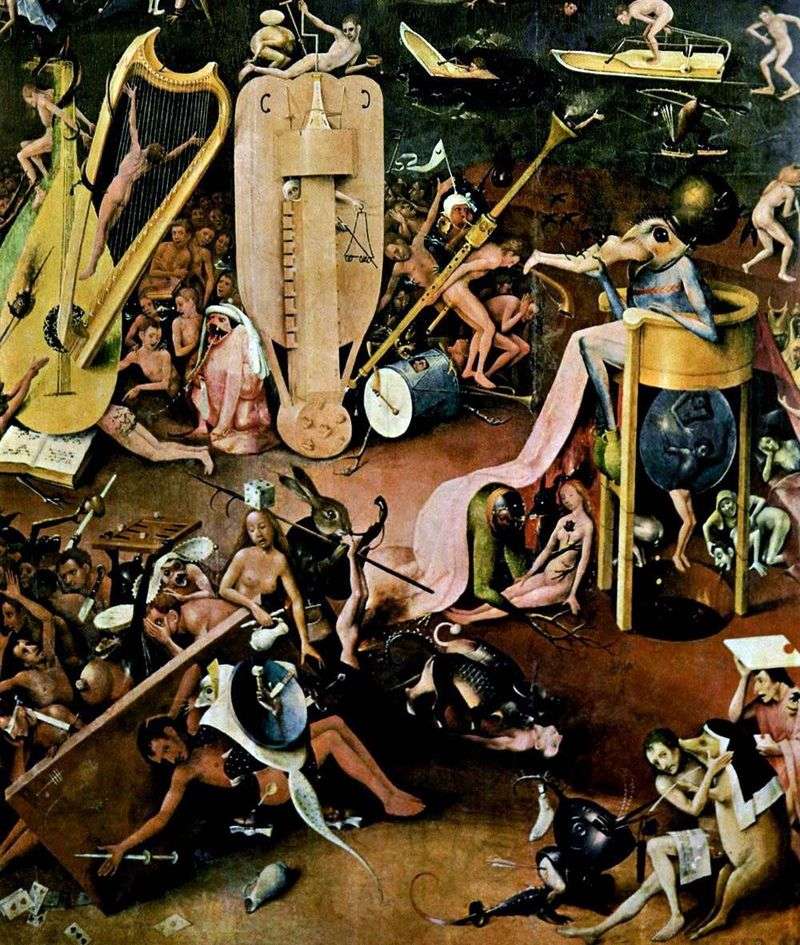
If in the depiction of “Earthly Paradise” in the triptych “The Garden of Earthly Delights” Hieronymus Bosch shows normal, natural interrelations, though not always humane, then in “Hell” – everything is turned upside down. The most harmless creatures are turned into monsters, ordinary things, growing to monstrous proportions, become an instrument of torture. A huge rabbit drags his prey – a little man bleeding to death; one musician is crucified on harp strings, the other is tied to the lute’s neck.
The place, which in the composition of Paradise is allocated to the source of life, here is occupied by a rotten “tree of death”, growing out of a frozen lake – rather, it is a tree man watching the collapse of his own shell. Bosch is inexhaustible in his descriptions of punishments for various sins. Infernal music will be punished by those who listened to idle songs and melodies. Snakes will adorn those who hugely embraced women, and the table, behind which gambling players played dice and cards, will turn into a trap.
In this monstrous world dominated by a bird monkey, who swallows human bodies and, passing them through his womb, throws him into the sewer pit, around which are punished for all sorts of sins. When compared with the board “The Seven Deadly Sins,” where the image of Hell is signed, what sins are punished for, one can guess what the sinners are punishing here. Below on the left, the angel is nailed to the blackboard by a monster, two dogs are tormented just above the envious one – pride looks in the mirror on the backside, the glutton erupts the contents of the stomach, and the greedy feces with coins. Medieval moralists called adultery “the music of the flesh” – and here in Bosch, numerous musical instruments torment the human flesh, but by no means sounds. And the sin of laziness, apparently, is symbolized by the sinner on the lower right with the paper on his knees,
The images of the terrible punishments to which sinners are subjected are not only the fruit of Bosch’s fantasy. In medieval Europe, there were many devices for torture: “hand saws”, “humblings”, “stork”, “penitential shirts”, “goats for witches,” pads, braziers, collars. “Iron Helmet” screwed on the head, breaking the bones of the skull. In “iron boots” they clamped their feet – the degree of compression depended on the severity of the sentence; in this shoe convicts were supposed to walk around the city, informing of their approach with an iron bell.
It is possible to say with confidence that everything depicted by the artist is an allegory. But about what it consists in, there is a lot of interpretation. Just like most Dutch and then Dutch masters, the symbolism of Bosch is very diverse, one common key to all of his paintings can not be picked up. Symbols used by Bosch, change the meaning depending on the context, and they can occur from a variety of sources, sometimes far from each other – from mystical treatises to practical magic, from ritual representations to folklore. As an artist who is halfway from the Middle Ages to the Renaissance, Bosch is characterized by rationality, erotic symbolism, fascination with riddles, the desire to translate into visual images puns and phraseological turns, the desire for moralizing and edifying.
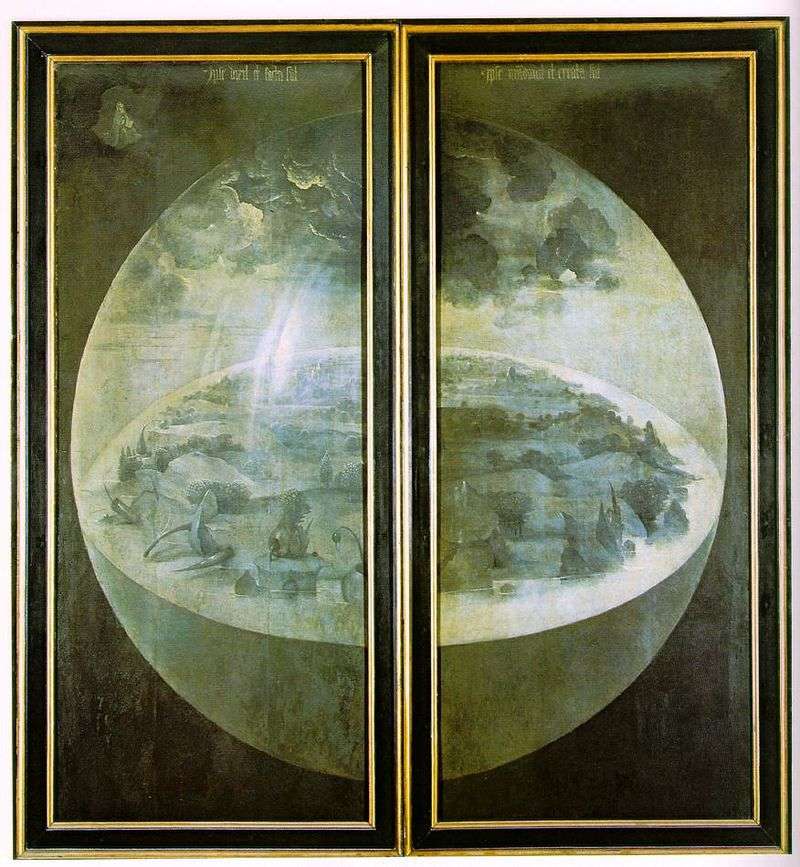 World creation. The outer leaves of the triptych Garden of earthly pleasures by Hieronymus Bosch
World creation. The outer leaves of the triptych Garden of earthly pleasures by Hieronymus Bosch Hell. The right shutter of the altar The Last Judgment by Hieronymus Bosch
Hell. The right shutter of the altar The Last Judgment by Hieronymus Bosch Hell, the altar of Voznesen. The right shutter by Hieronymus Bosch
Hell, the altar of Voznesen. The right shutter by Hieronymus Bosch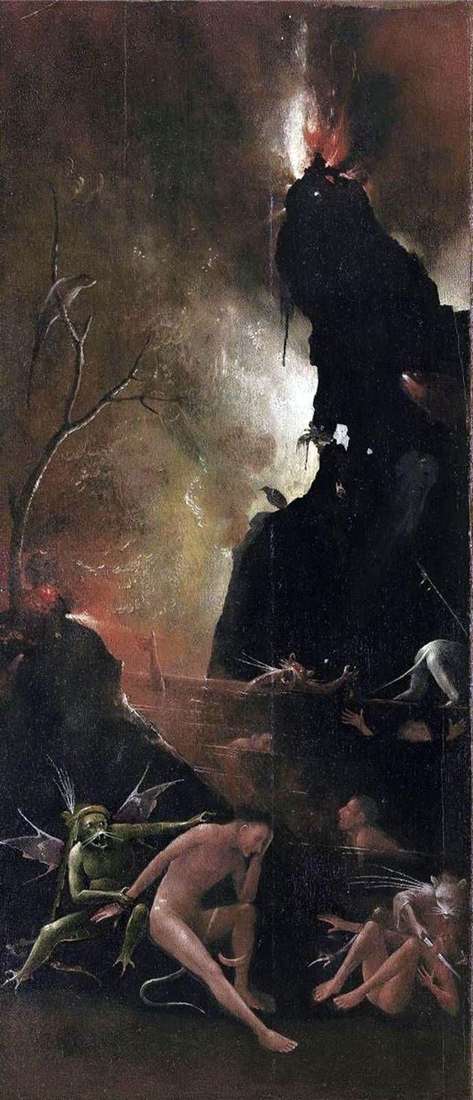 Hell’s River, Visions of the Hereafter by Hieronymus Bosch
Hell’s River, Visions of the Hereafter by Hieronymus Bosch Garden of Earthly Delights by Hieronymus Bosch
Garden of Earthly Delights by Hieronymus Bosch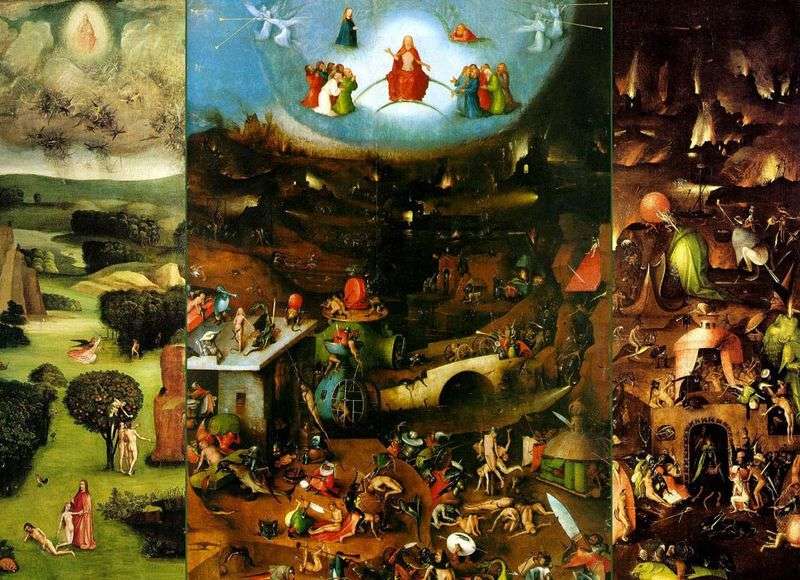 The Last Judgment by Hieronymus Bosch
The Last Judgment by Hieronymus Bosch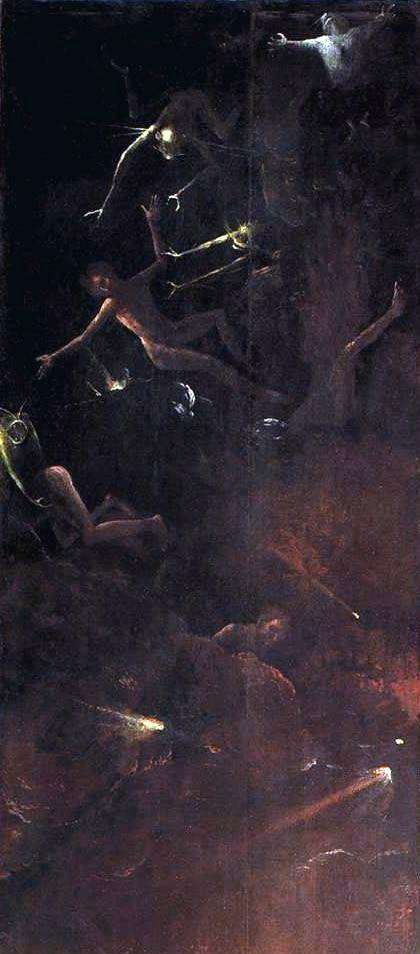 The overthrow of sinners, Visions of the Hereafter by Hieronymus Bosch
The overthrow of sinners, Visions of the Hereafter by Hieronymus Bosch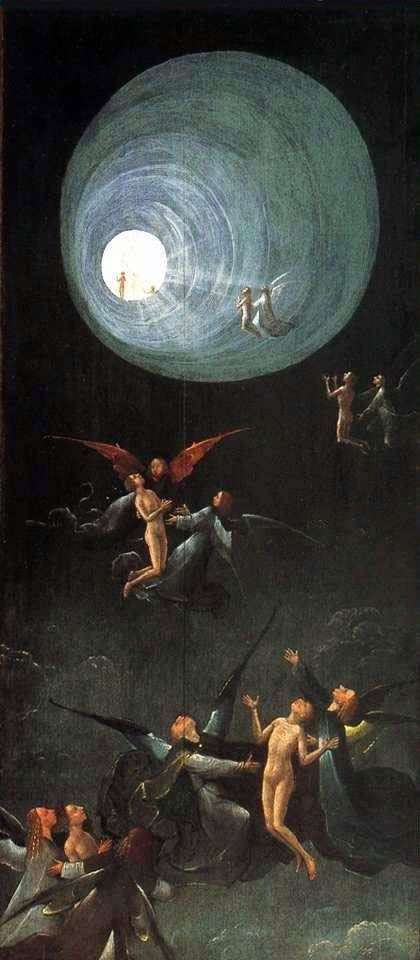 Ascension in the Empire, Visions of the Hereafter. Part of the altar by Hieronymus Bosch
Ascension in the Empire, Visions of the Hereafter. Part of the altar by Hieronymus Bosch